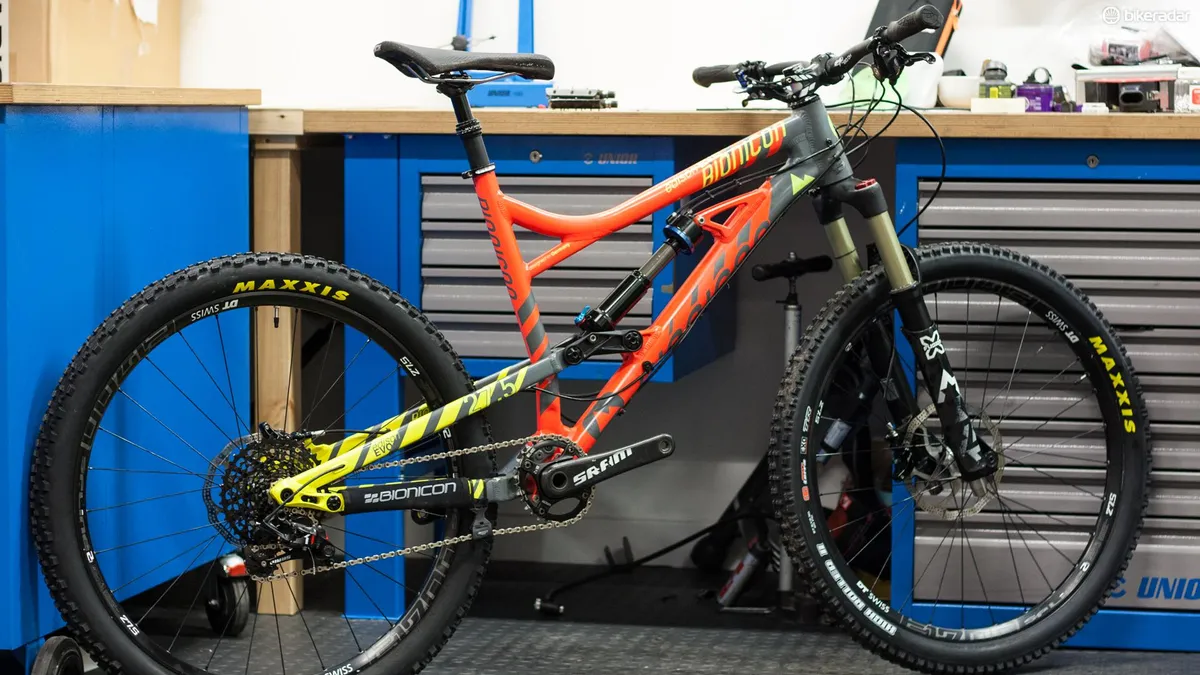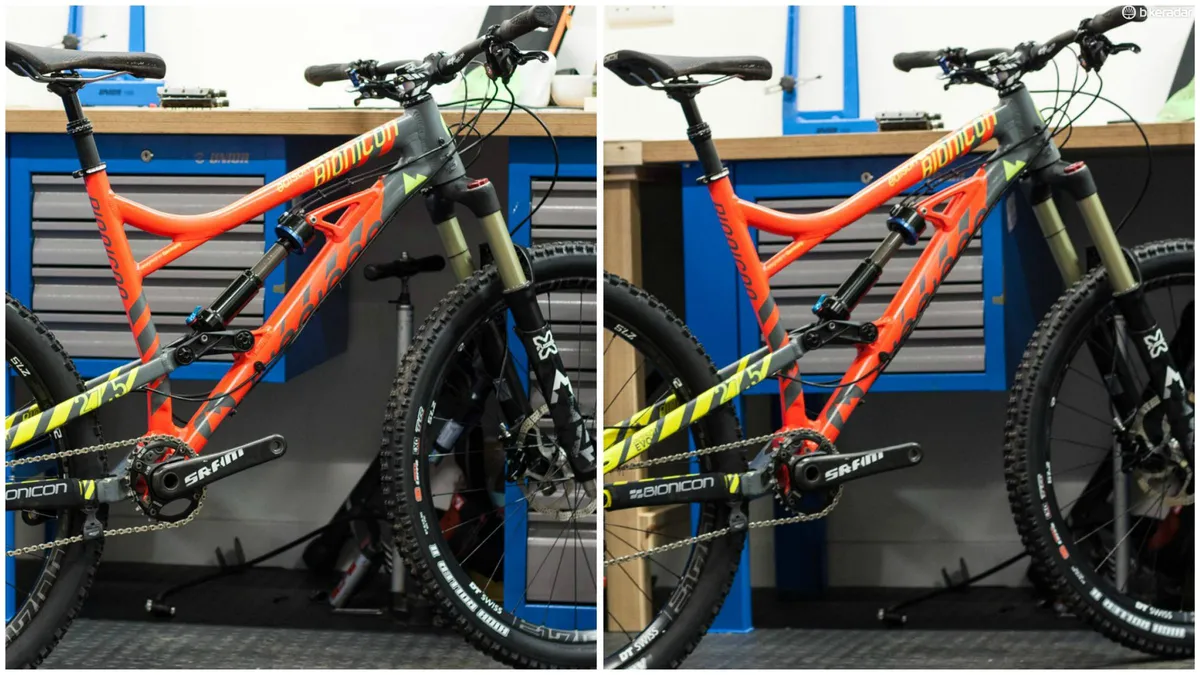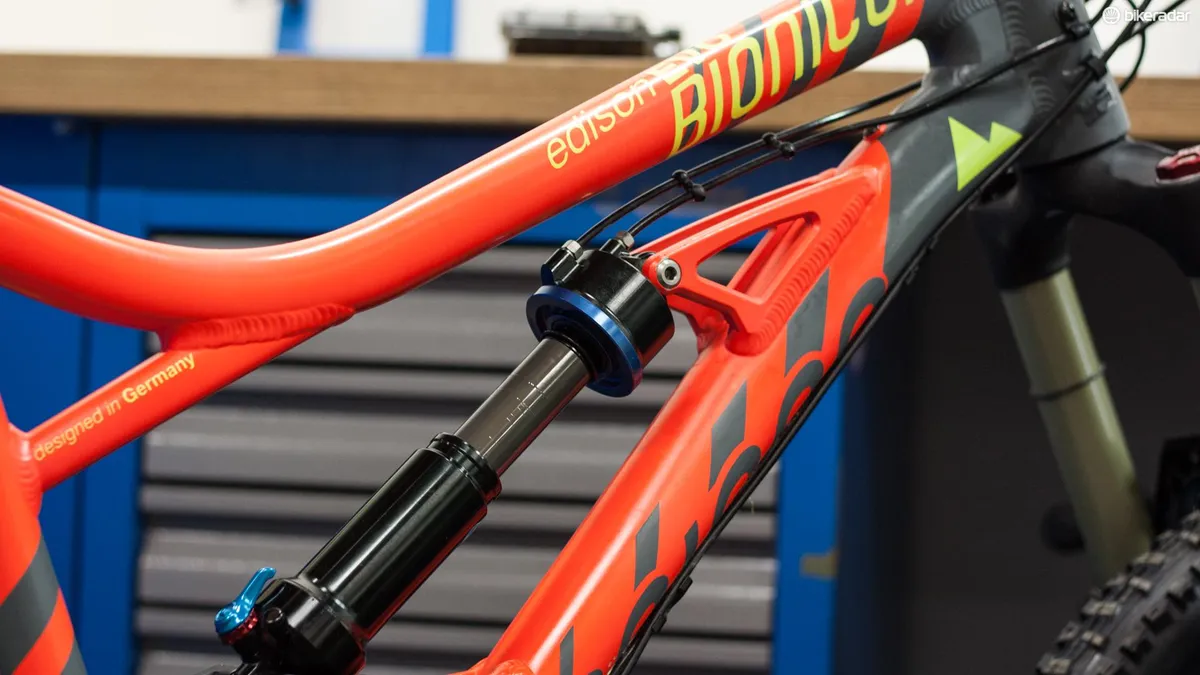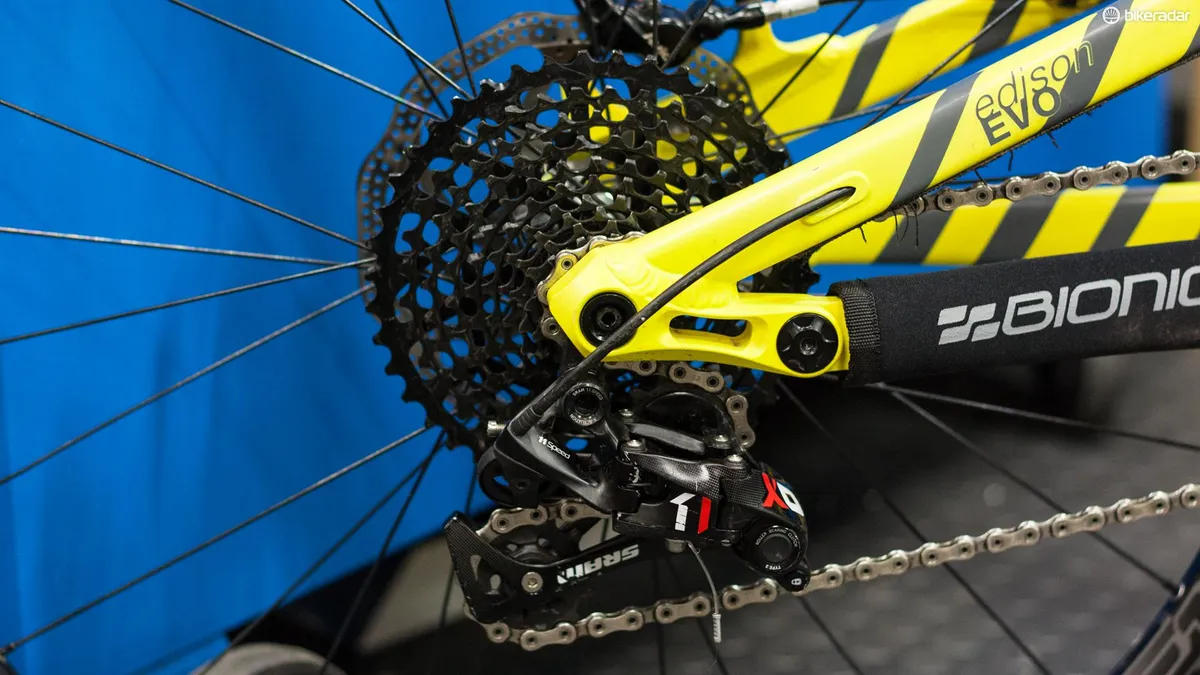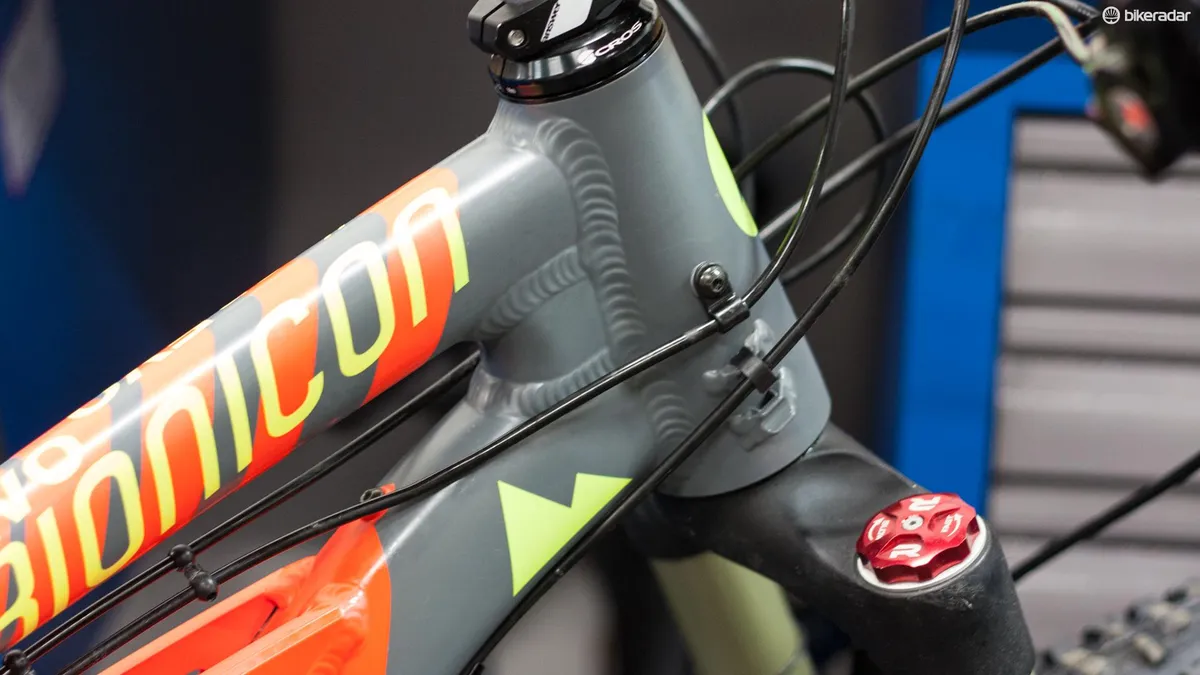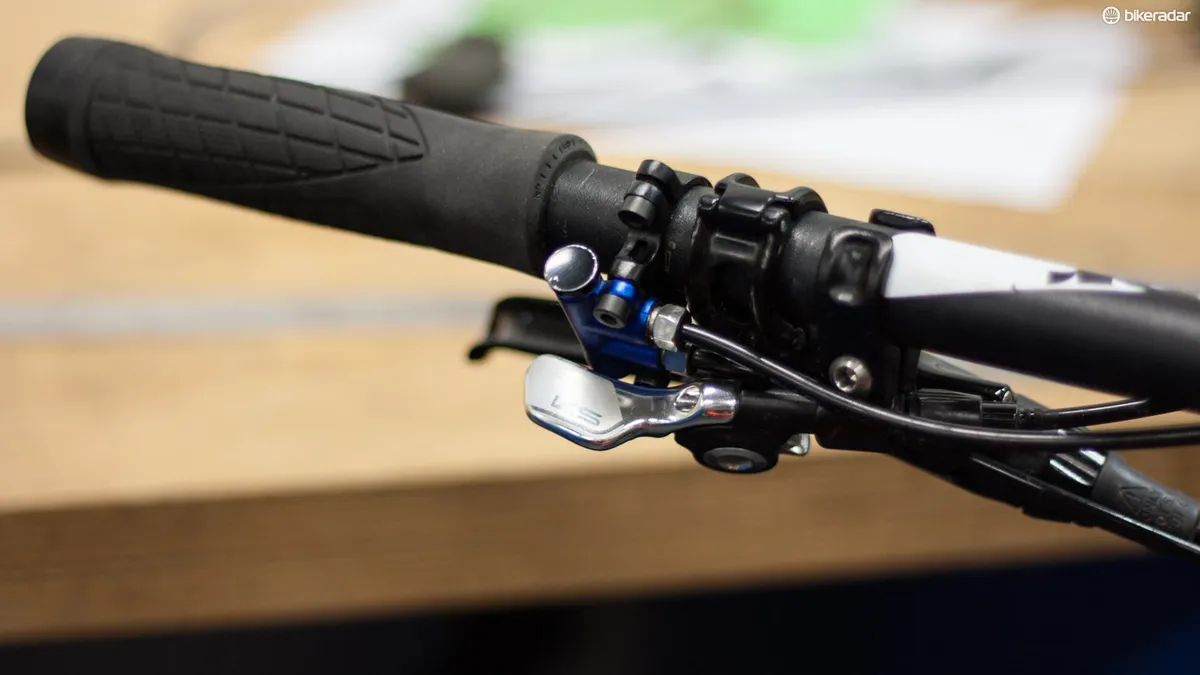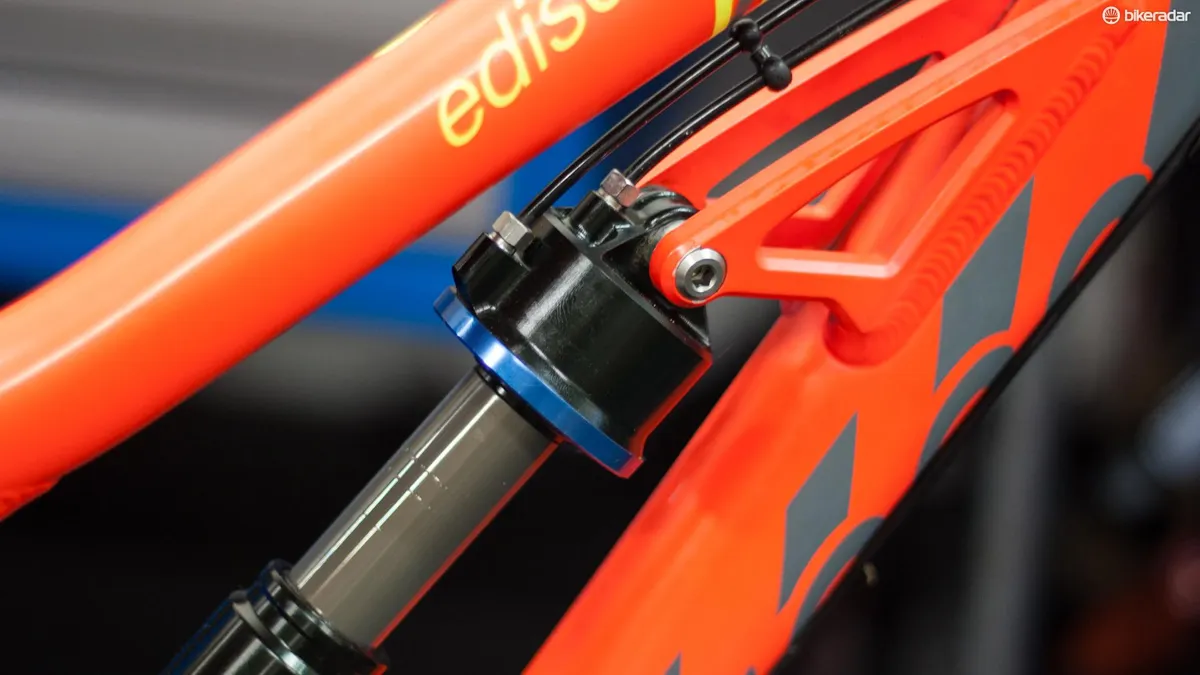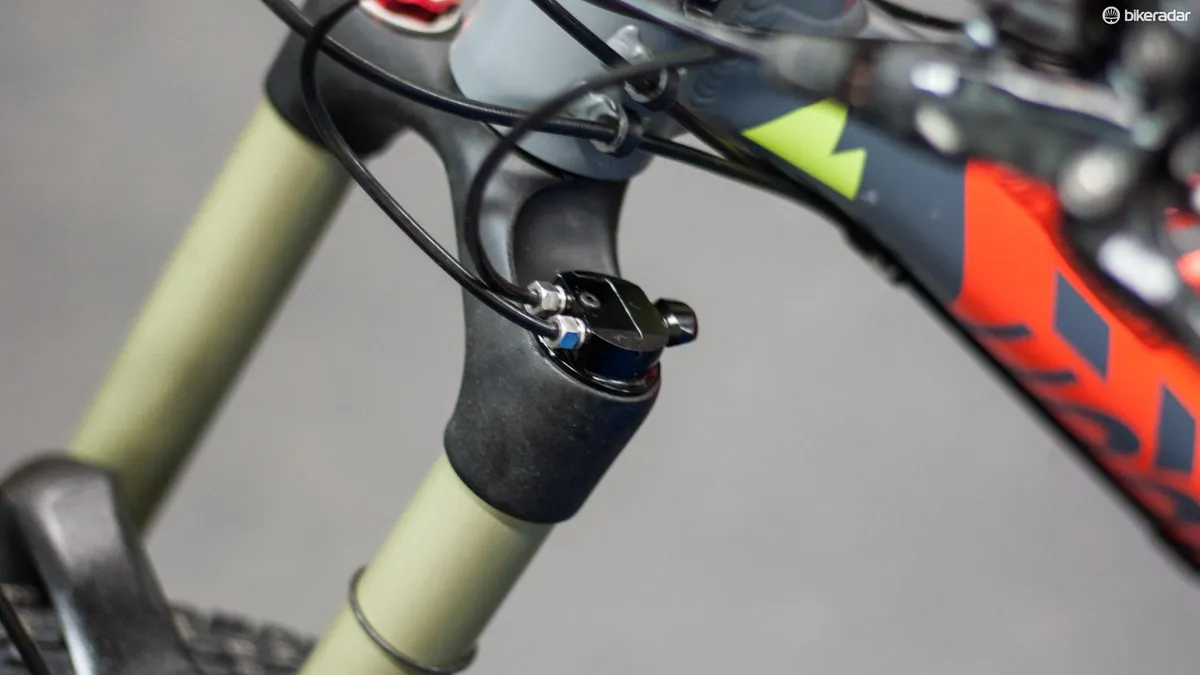What Bionicon is trying to do with the Edison EVO is pretty much the same as what everyone else is trying to do with their bikes. It wants to produce a bike that climbs as well as it descends, a bike that should leave others gathering dust, a bike that becomes your default choice because it’s simply great at everything.
The company has gone about that in a unique way, and just like Bionicons of old, the new Edison EVO has something of a split personality.
That’s down to the unique Magura-built rear shock and X-Fusion Metric HL-R fork, which are linked by a handlebar mounted button. This isn’t your usual travel adjust or lockout platform though; the Edison can lower its fork by up to 80mm, and the rear end raises simultaneously to maintain the same bottom bracket clearance despite the new, much steeper angles. Put simply, you push the button, shift your weight, and move the head and seat angle by up to five degrees.
Aside from that odd-looking mushroom at the end of the shock and a few extra hoses, the 180mm travel Edison Evo hides its nerdy shape-shifting abilities well.
Downhill mode
When it's sat up in its downhill mode the Bionicon looks fairly mean. With a wheelbase of 1,200mm (47.24in) for this size large sample bike it’s lengthy but not fashionably long, and the 64-degree head angle should provide reliable steering, even when you’re spinning out its tallest gear.
Unweight the bike and apply a short push at the neatly integrated handlebar lever and the Bionicon slithers its way smoothly from Jekyll to Hyde.
Climbing mode
The front and rear of the bike move from downhill mode to climbing mode together, in a way that isn’t easy to track, but here’s what is really going on:
When climbing mode is engaged the suspension hardware at the rear shock is extended, raising the rear end and steepening the head and seat angles by up to five degrees. This also moves the position of the rocker arm at the suspension linkage. This firms up the suspension action but the amount of travel remains unchanged. At the same time, the Edison drops its X-Fusion Metric HL-R fork by up to 40mm to compensate for the change at the rear.
What you end up with is the same bottom bracket height as when the bike is in its long travel mode (good clearance), but elsewhere it’s steeper, firmer and more agile bike that should be raring to climb.
To switch the bike back to its downhill mode is just a case of pushing that lever once more.
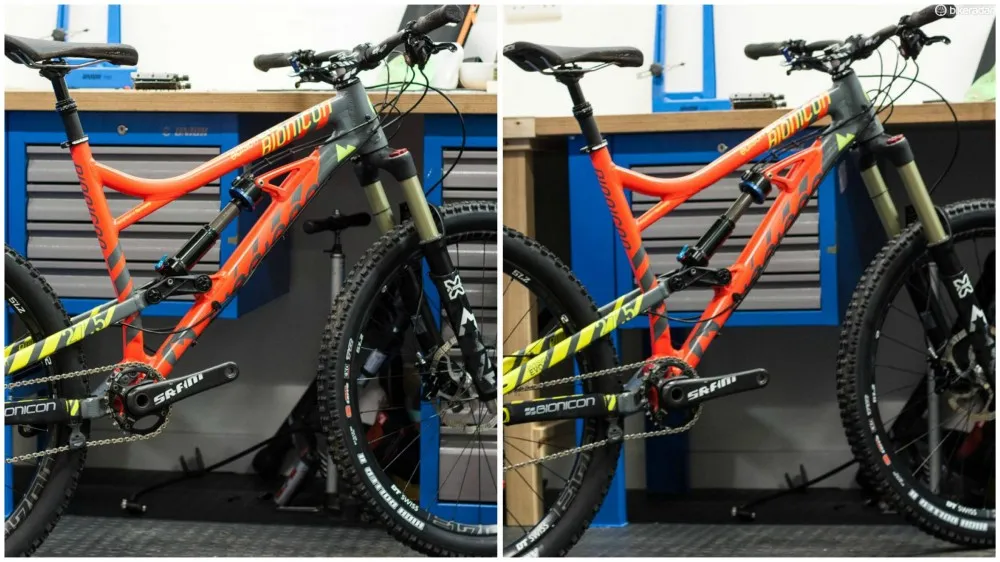
The Edison in climbing (L) and downhill (R) modes: notice the extension at the shock hardware, the angle change at the suspension linkage and the travel change at the fork
There’s no getting away from the fact this is a long-travel machine, and amidst a market of machines where anything between 160 and 190mm is no longer common, it stands out. However, the Edison is also available in a 160mm travel version and both are available with 26in or 27.5in wheels. You can even have it without Bionicon’s trick suspension system.
The production Edison EVO spec will vary slightly from the build pictured but you’ll still get the X01 drivetrain, DT 1700 Spline wheelset, SRAM Guide brakes, Answer finishing kit and KS Lev Integra dropper post. It certainly seems decent value at €3,600. Other build options are listed on the Bionicon website. This size large sample bike tipped our scales at a very reasonable 30.9lb (14kg).
Review samples of these are a bit scarce at the moment but we expect to have one to test in the near future, stay tuned for more on this German oddity.
